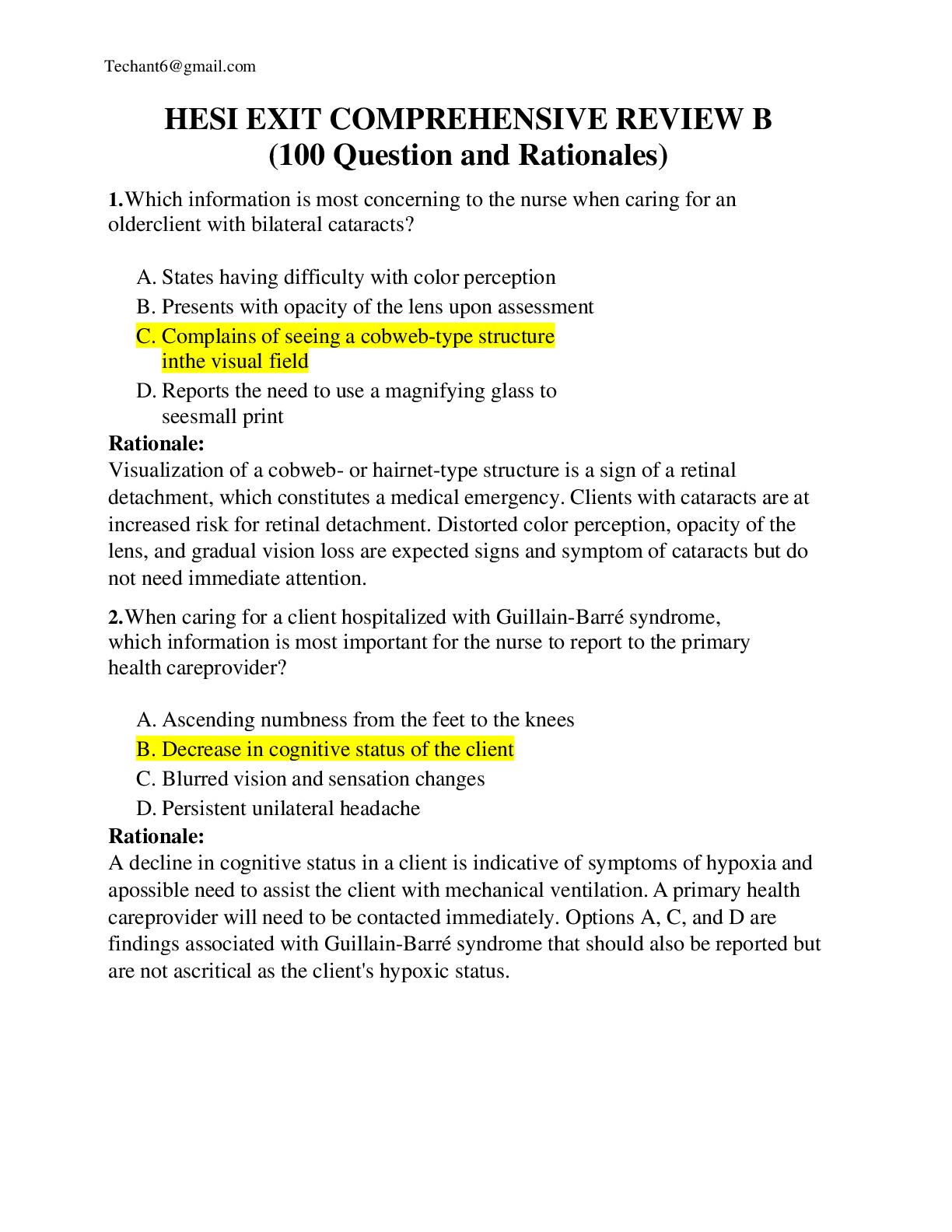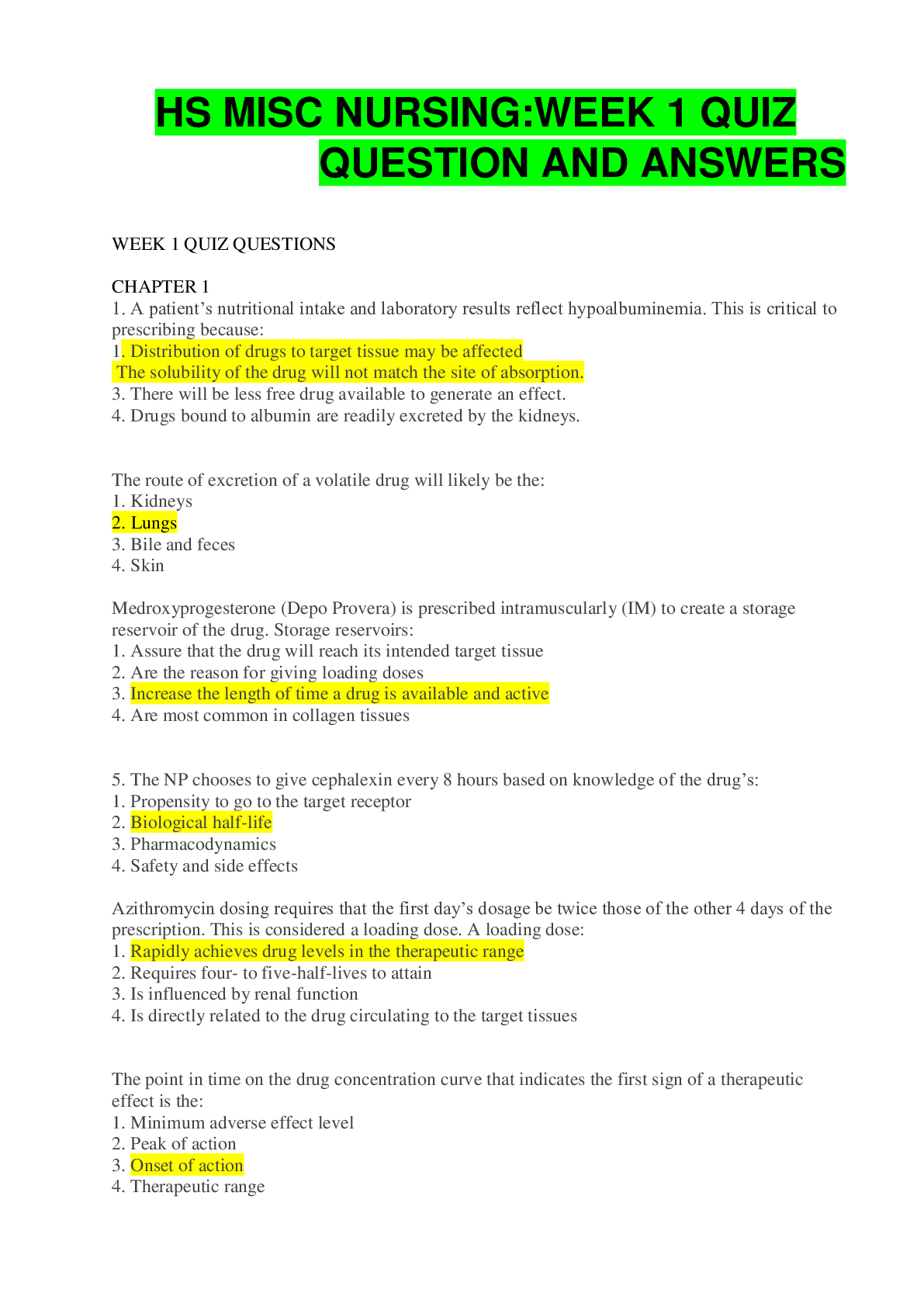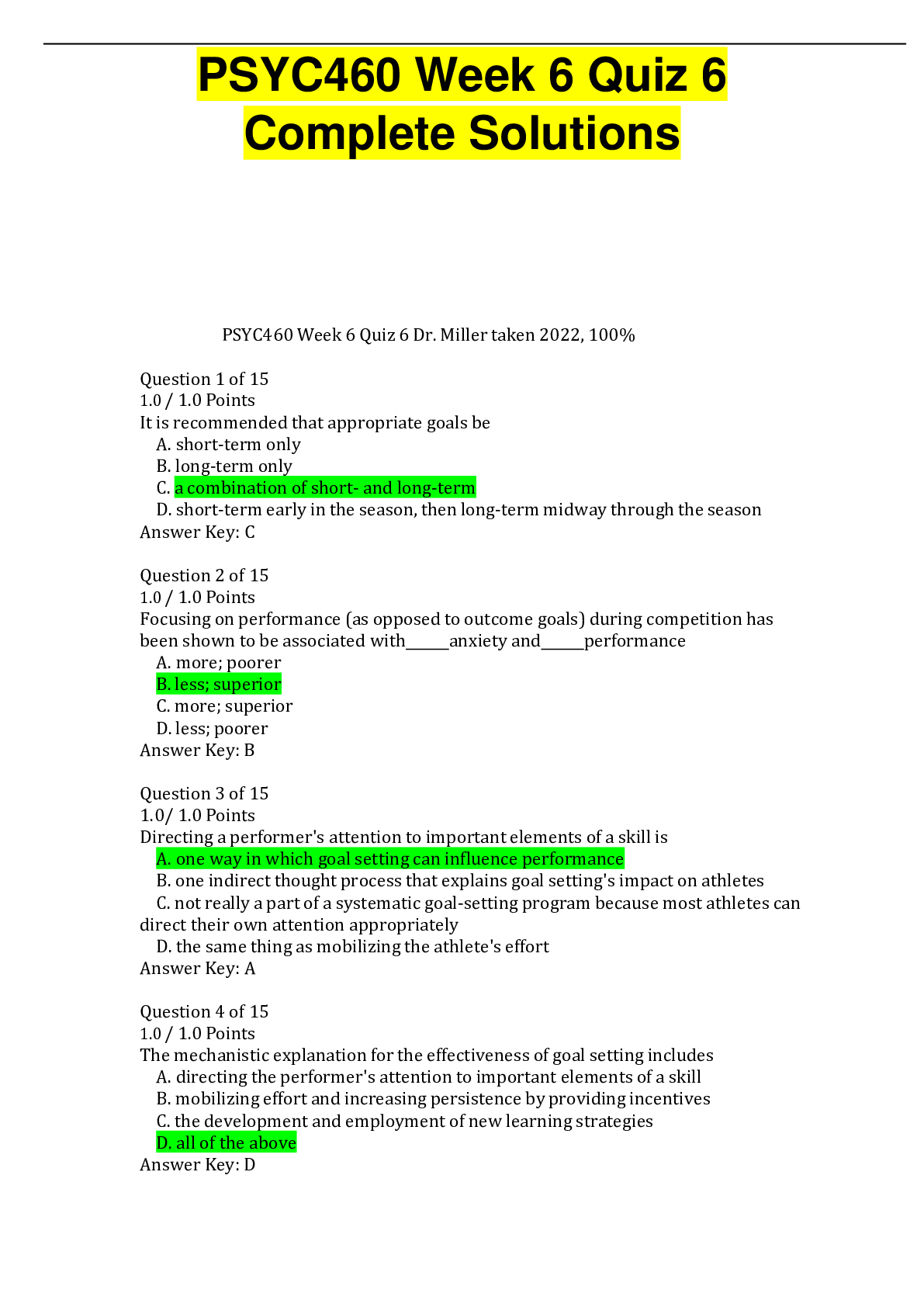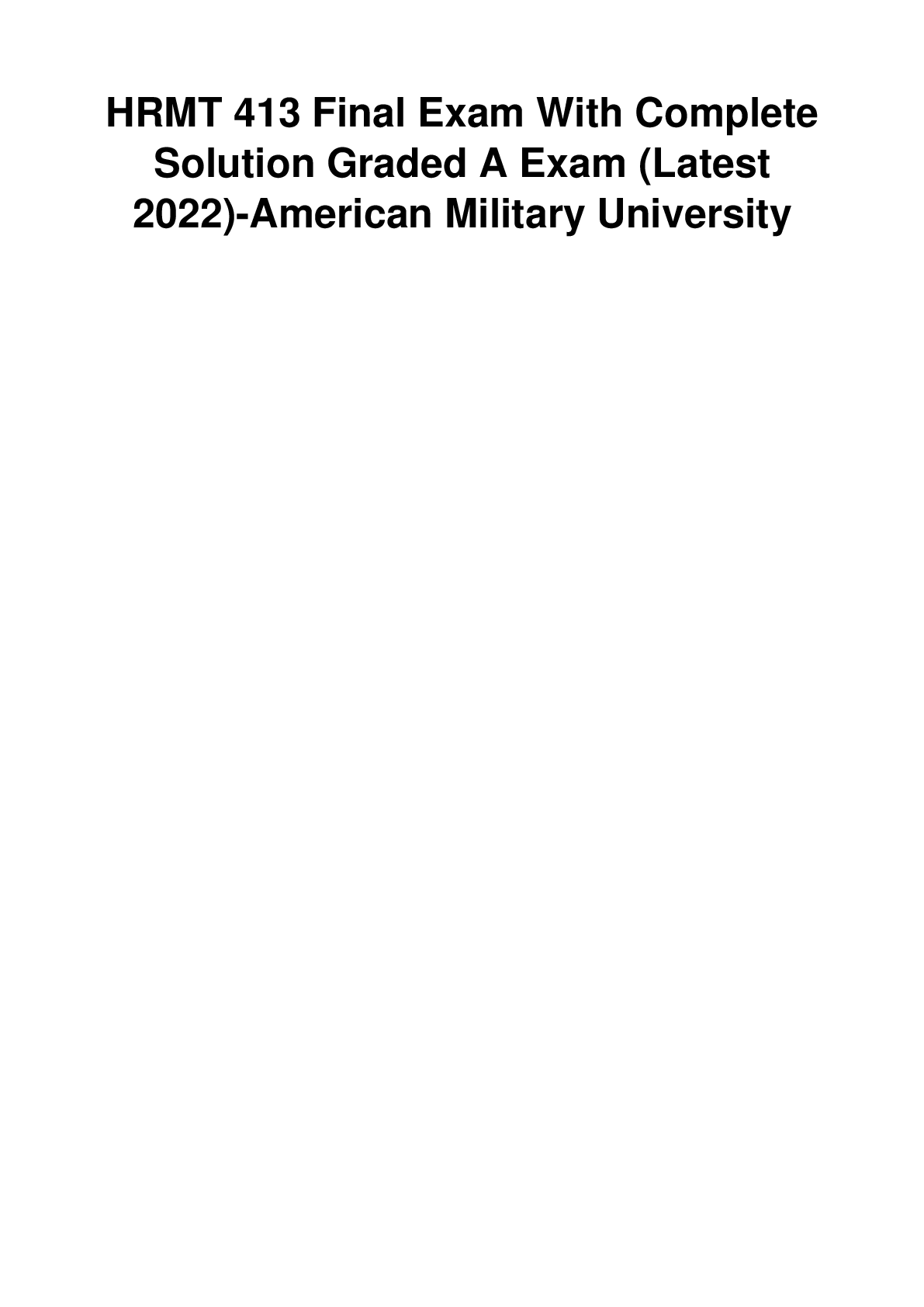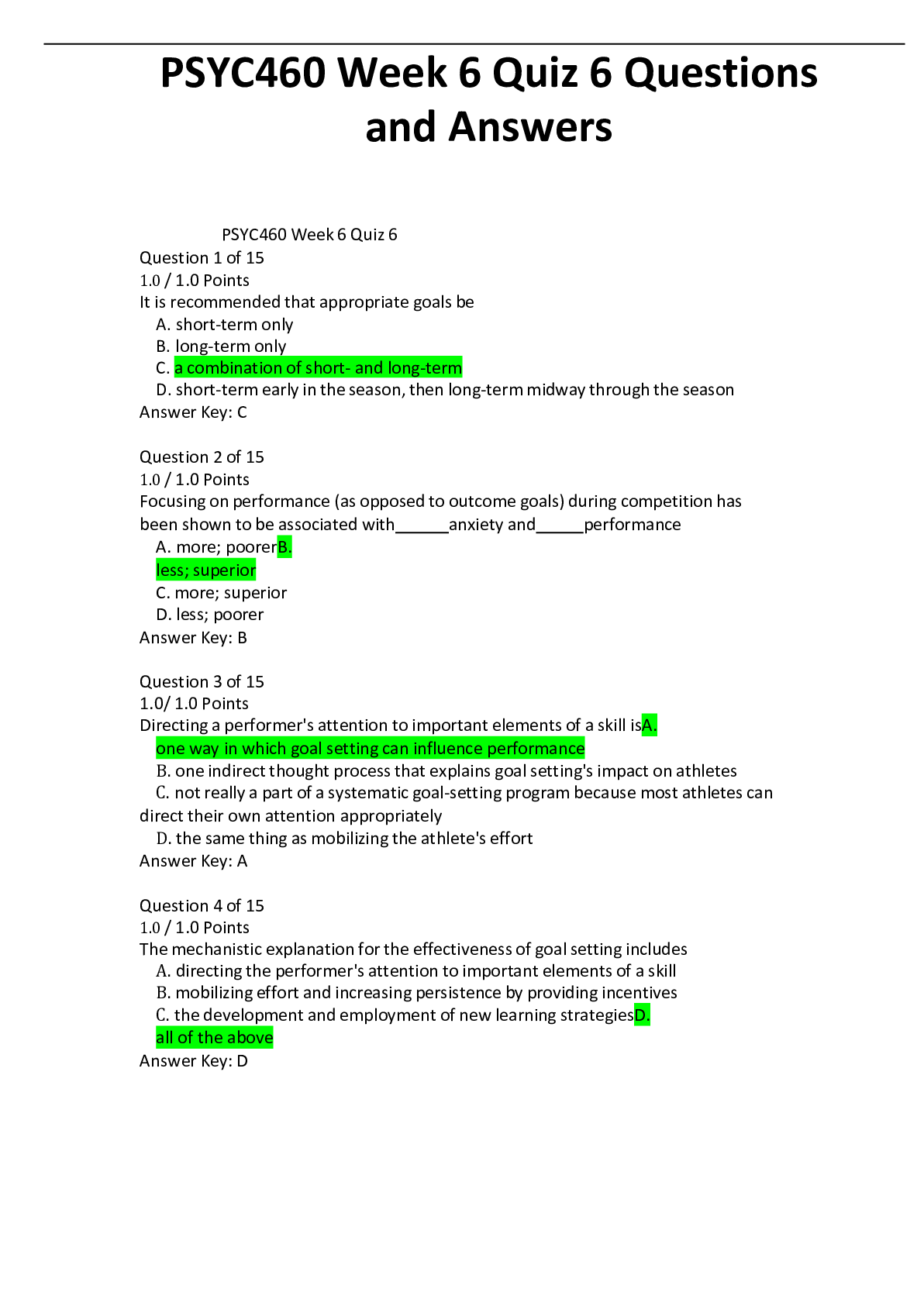*NURSING > QUESTIONS & ANSWERS > S6 Chemistry Mock Exam (2019-2020) Paper 1A - Good Revision for your mocks. (All)
S6 Chemistry Mock Exam (2019-2020) Paper 1A - Good Revision for your mocks.
Document Content and Description Below
1. There are TWO sections, A and B, in this Paper. You are advised to finish Section A in about 45 minutes. 2. Section A consists of multiple-choice questions in this question paper, while Section B ... contains conventional questions printed separately in Question-Answer Book B. 3. Answers to Section A should be marked on the Multiple-choice Answer Sheet while answers to Section B should be written in the spaces provided in Question-Answer Book B. The Answer Sheet for Section A and the Question-Answer Book for Section B will be collected separately at the end of the examination. 4. A Periodic Table is printed on the back of Question-Answer Book B. Atomic numbers and relative atomic masses of elements can be obtained from the Periodic Table. INSTRUCTIONS FOR SECTION A (MULTIPLE-CHOICE QUESTIONS) 1. Read carefully the instructions on the Answer Sheet. 2. When told to open this book, you should check that all the questions are there. Look for the words ‘END OF SECTION A’ after the last question. 3. All questions carry equal marks. 4. ANSWER ALL QUESTIONS. You are advised to use an HB pencil to mark all the answers on the Answer Sheet, so that wrong marks can be completely erased with a clean rubber. You must mark the answers clearly; otherwise you will lose marks if the answers cannot be captured. 5. You should mark only ONE answer for each question. If you mark more than one answer, you will receive NO MARKS for that question. 6. No marks will be deducted for wrong answers. 2 This section consists of two parts. There are 24 questions in PART I and 12 questions in PART II. Choose the best answer for each question. Candidates may refer to the Periodic Table printed on the back of the Question-Answer Book B. PART I 1. Element X has three isotopes, 189X, 190X and 192X. The graph below shows the relative abundances of the isotopes. What is the relative atomic mass of X? A. 189.7 B. 190.3 C. 190.7 D. 191.3 2. Which of the following processes will NOT produce carbon dioxide? A. Adding dilute ethanoic acid to marble B. Adding water to quicklime C. Burning butane in air D. Heating limestone strongly in air 3. Which of the following hydroxides CANNOT be prepared by the given reaction? A. Pb(OH)2 from the reaction between Pb(NO3)2(aq) and excess NaOH(aq) B. Cu(OH)2 from the reaction between CuSO4(aq) and excess NaOH(aq) C. Fe(OH)3 from the reaction between FeCl3(aq) and excess NH3(aq) D. Mg(OH)2 from the reaction between MgCl2(aq) and excess NH3(aq) 3 4. A student was asked to identify an element, which has the following properties: (1) It is a solid stored in an air-tight reagent bottle at room temperature. (2) It is insoluble in water but soluble in non-polar solvents. (3) It can oxidize sulphite ions to sulphate ions. To which group of the Periodic Table does this element belong? A. Group I B. Group III C. Group V D. Group VII 5. Which of the following solutions turns blue immediately upon the addition of 1 M FeSO4(aq)? A. KI(aq) B. KOH(aq) C. K3Fe(CN)6(aq) D. KSCN(aq) 6. Which of the following statements is correct? A. All aqueous solutions contain OH− (aq) ions. B. Under room conditions, the pH of an alkaline solution may be a negative value. C. All alkaline substances contain hydroxide ion as their constituent ions. D. A ‘corrosive’ hazard warning label must be displayed on a bottle of alkaline solution. 7. Potassium peroxodisulphate (K2S2O8) decomposes to potassium sulphate, sulphur trioxide and oxygen upon heating. What is the mole ratio of sulphur trioxide and oxygen produced? A. 1 : 2 B. 2 : 1 C. 3 : 2 D. 2 : 3 4 8. The following three set-ups are used to investigate rusting. The three test tubes are allowed to stand for one week. (1) (2) (3) Which of the following combinations about the three set-ups is correct? Rusting observed No rusting observed A. Amount of rust: (3) > (2) (1) B. Amount of rust: (2) > (3) (1) C. Amount of rust: (1) > (3) (2) D. Amount of rust: (3) > (1) (2) 9. Which of the following reactions has a negative enthalpy change? A. Zn(s) + H2SO4(aq) → ZnSO4(aq) + H2(g) B. 2NH3(g) → N2(g) + 3H2(g) C. CuCO3(s) → CuO(s) + CO2(g) D. 2NaCl(aq) + 2H2O(l) → 2NaOH(aq) + Cl2(g) + H2(g) 10. 20.0 cm3 of 0.10 mol dm−3 NaOH(aq) is required for the complete neutralization of 0.568 g of an organic acid, which has a formula of CnH2n+1COOH. What is the value of n? (Relative atomic masses: H = 1.0, C = 12.0, O = 16.0) A. 15 B. 16 C. 17 D. 18 [Show More]
Last updated: 1 year ago
Preview 1 out of 15 pages

Buy this document to get the full access instantly
Instant Download Access after purchase
Add to cartInstant download
We Accept:

Reviews( 0 )
$13.50
Document information
Connected school, study & course
About the document
Uploaded On
May 03, 2021
Number of pages
15
Written in
Additional information
This document has been written for:
Uploaded
May 03, 2021
Downloads
0
Views
42

